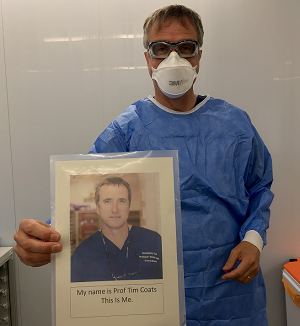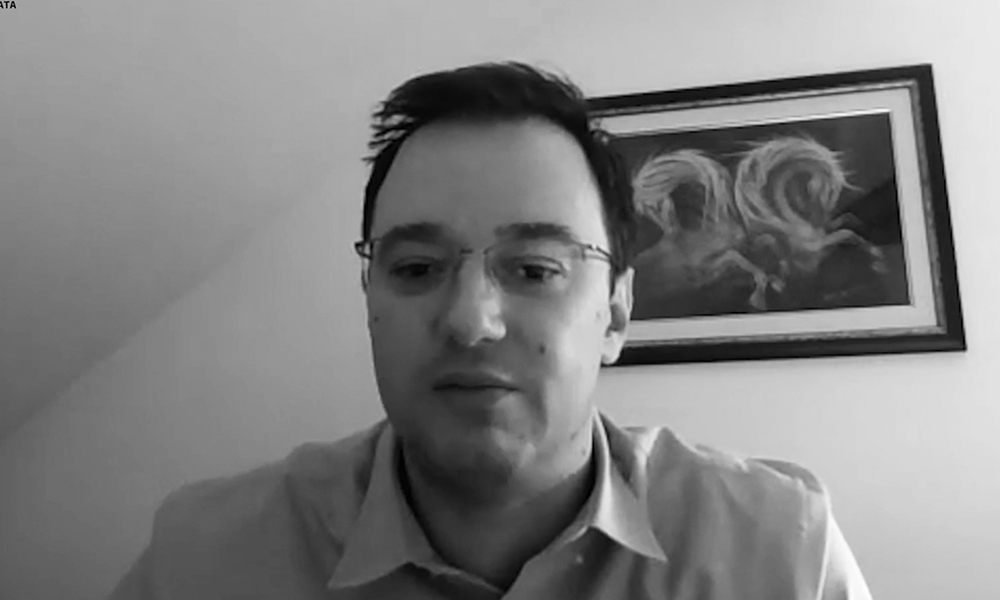No one can doubt the scale of the catastrophe unfolding in the UK because of the Covid-19 pandemic. Each Covid-related death is a personal tragedy, and the repercussions will reverberate across the NHS for some time after the virus is defeated, thanks to a growing backlog of deferred treatments and delayed diagnoses.
Frontline medics and carers are rightly praised for rising to the challenge, but they can only succeed with effective support systems to back them up. IT has played a critical part in optimising the NHS pandemic response, and the irony is that the current adversity has helped to brew up a fantastic cauldron of innovation. In many cases, new solutions that might otherwise have taken years to establish have been rolled out in a matter of weeks.
Stimulating ideas
As the pressure mounts, there is a natural tendency to aim for solutions that “fix it first” and iron out the details later. Obviously, this approach can only go so far in the highly regulated context of healthcare, where the safety of patients and staff is sacrosanct and patient data must be safeguarded. Even so, healthcare services have made massive strides with new technologies.
NTT DATA has been privileged to support some of these efforts with our key healthcare customers. Working with these customers, we have:
Rolled out Microsoft Teams over a single weekend to all staff at the UK healthcare regulator, MHRA, to support their work on medicines and ventilator approvals as well as Covid-19 vaccines and testing
Investigated the use of advanced AI to support radiologists interpret chest X-Rays to diagnose Covid-19
Helped one of the largest NHS Trusts innovate at pace in response to the deluge of Covid-19 patients
It has been exhausting, exhilarating and humbling in equal measure supporting these frontline teams.
Isolation adds to the misery for many Covid-19 patients and their loved ones, so one of our first priorities was to enable effective video communication… We repurposed more than 300 iPads to provide this vital function, allowing relatives to communicate securely with loved ones being treated in ICUs. This is a poignant example of how simple solutions, deployed rapidly, can make an extraordinary difference.
It is already plain to see that some of these innovations will permanently change the way we run our health services. With support from NHS England, hospitals and GP practices have embraced video-based patient consultations. Developments like these are shifting people’s perceptions around how they can expect to access medical care in the long term.
Solutions for the clinical frontline
Covid-19 has been a significant incremental burden on the NHS. While large NHS Trust hospitals have been dealing with the onslaught of Covid-19 patients, the normal business of the acute hospitals has not stopped. Patients are still presenting in A&E (albeit in lower numbers) with heart attacks, strokes and other traumas. The combined volume of clinical activity along with the reduction in staffing levels caused by doctors and nurses themselves needing to self-isolate and the need to segregate Covid-19 from other critical non-Covid patients has meant that the command structures of hospitals have had to adapt quickly. NTT DATA has worked with our customers to deploy advanced command-and-control support to help the NHS operations teams orchestrate the frenetic activity across the hospital group.
The University Hospitals of Leicester (UHL) NHS Trust is one of NTT DATA’s key customers, where we run all the core infrastructure and services across three major hospitals and eight other locations. In all the NTT DATA team supports 18,000 clinical and non-clinical users across the three acute hospitals and eight other clinics. UHL’s response to the pandemic has led to a number of exciting innovations in recent weeks.
Better communication was the central pillar in several of the new solutions. Patients, relatives, and in many cases, clinicians were thrown into a quite alien environment, where the use of Personal Protective Equipment (PPE) created a barrier to normal engagement. Patients or relatives, dealing with an already stressful situation, had to engage with a clinical team unrecognisably shrouded in gowns, face masks and goggles. Clinicians across the NHS came up with beautifully simple, low-tech but effective solutions. Many took to printing out laminated “This is me” photos of themselves to attach to their gowns to help create that all-important human connection between clinicians, relatives and patients.

Isolation adds to the misery for many Covid-19 patients and their loved ones, so one of our first priorities was to enable effective video communication between patients in the infection control “red zones” and their visiting families. NTT DATA repurposed more than 300 iPads to provide this vital function, allowing relatives to communicate securely with loved ones being treated in ICUs. This is a poignant example of how simple solutions, deployed rapidly, can make an extraordinary difference to the experience of Covid-19 patients and their relatives.
And now, my favourite example of a collaborative response in the face of Covid-19: accelerated innovation delivered by a multidisciplinary team of medics and technology experts, including some of the best engineers from Formula 1.
The project started when UHL’s head of emergency medicine, Professor Tim Coats, and Digital Innovation Lead & Consultant in Emergency Medicine Ben Teasdale, realised that their colleagues had experienced several medical near misses – known in the NHS as ‘never events’ – because they were unable to make themselves understood when issuing important clinical instructions whilst wearing PPE. They asked NTT DATA to help find a solution.
NTT DATA leveraged its worldwide team to look for candidate technologies. Any solution had to be relatively comfortable when worn for long shifts, easy to control while wearing gloves and gowns, as well as being infection control safe. Perhaps the systems used by Australian firefighters might work? Or those favoured by military special forces? Much experimentation and whiteboard design sessions followed, with wiring diagrams and proofs-of-concept built quickly.

In the end, with the support of a group of Formula 1 teams working together as part of “Project Pitlane”, technicians from Renault F1 and Red Bull F1 helped design a novel solution using neck mics, air tube earpieces and a customised control box with a speaker worn under the clinician’s gown. The system is now being deployed at UHL and will hopefully benefit the rest of the NHS in due course.
A better model for the future
While no one would seek to downplay the dreadful consequences of Covid-19, there is no doubt that it has driven the NHS to deliver a level of innovation that would be worthy of celebration under other circumstances.
There will be many lessons to learn once the current crisis is over. One of those must surely be that the NHS is far more capable of delivering an agile response and cutting-edge solutions than anyone gave it credit for. We have a tremendous opportunity to move forward to an innovative new normal in healthcare, rather than returning to the previous slow-paced status quo. We must not squander that chance.

















































